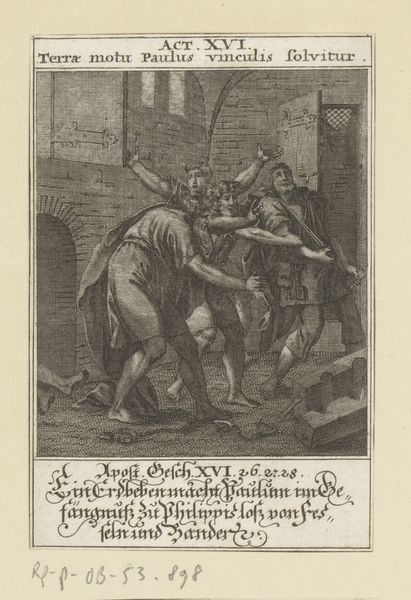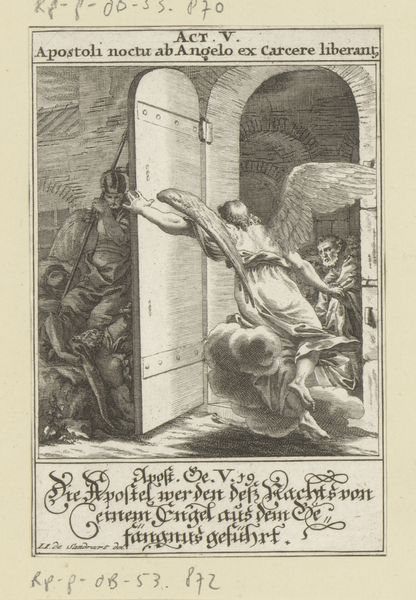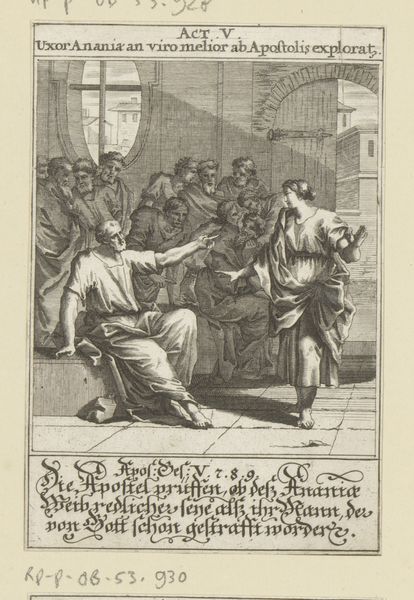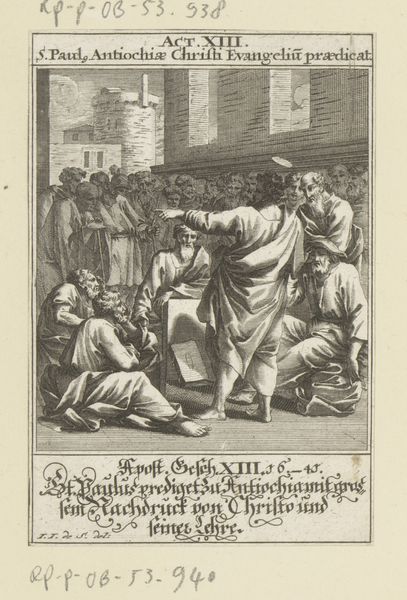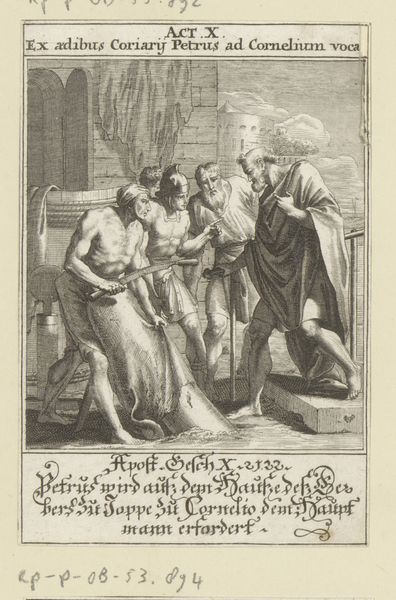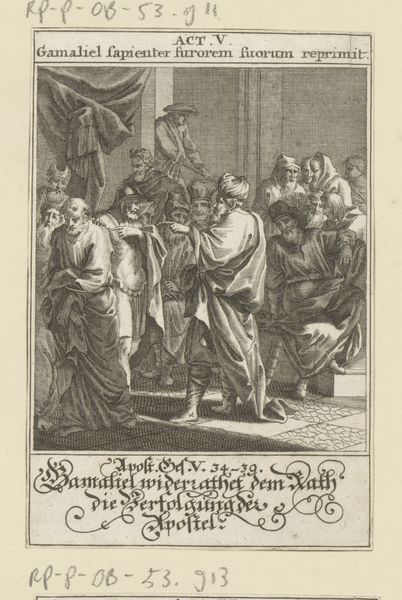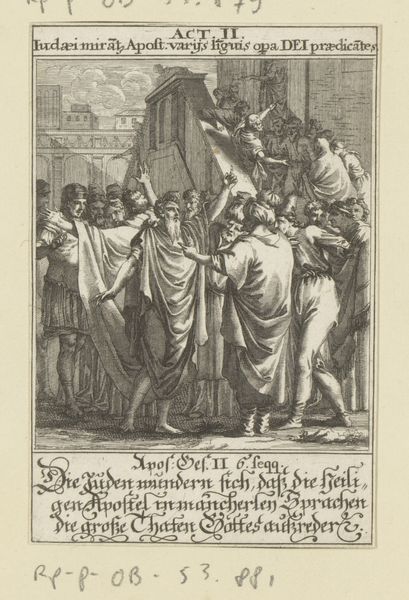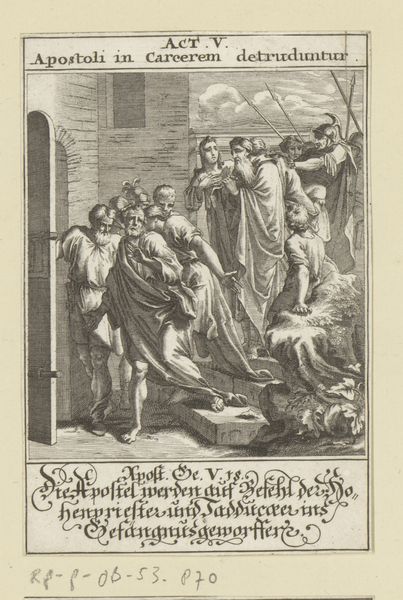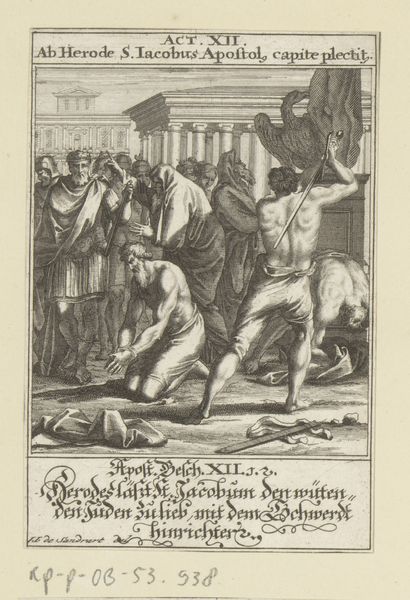
print, engraving
#
narrative-art
#
baroque
# print
#
figuration
#
history-painting
#
engraving
Dimensions: height 121 mm, width 80 mm
Copyright: Rijks Museum: Open Domain
Curator: The mood here feels immediately fraught—a figure dramatically kneeling before two standing men in what seems like supplication or maybe even fear. The limited values create a sense of stark contrast. Editor: This is "Apostel Paulus en Silas bekeren de gevangenbewaarder," translating to "Apostle Paul and Silas Convert the Jailer," an engraving from 1697, currently residing here at the Rijksmuseum. The style is definitively Baroque. Notice how the anonymous artist masterfully uses line to convey texture and depth despite the work being monochrome and relatively small. Curator: Right, the linearity absolutely structures the emotional impact. The keys dangling from the jailer's belt aren't merely utilitarian; they symbolize a relinquished power, a turning point underscored by his very posture—prostrate, offering himself to these men. This narrative is as much about earthly authority as it is about spiritual conversion. Editor: Observe the light—or the artist’s masterful suggestion of it through cross-hatching and variable line weight. It falls selectively, drawing our eye to the key figures: Paul and Silas and the converted jailer. This use of light underscores the dramatic focus, as does the tight composition that corrals our focus onto the conversion narrative, eliminating superfluous details. Curator: Consider that the act of conversion carries enormous symbolic weight. It isn't merely a change of faith but a complete reshaping of one's identity and allegiance, which would resonate deeply in a religiously turbulent time. And consider, too, how this small, reproducible image served as a means of spreading and reinforcing that message far beyond the church. The message and symbols travel far away, rippling in both the earthly and heavenly spheres. Editor: Agreed. Looking closer, the meticulous detail given to texture using lines – the rendering of the figures' garments and musculature through sheer graphical modulation– all testify to a dedication to imbuing the image with dynamic energy, very typical of baroque printmaking traditions. Curator: To engage with art from this time isn't only about aesthetics. We touch symbols which in turn reach back into collective history and perhaps offer reflections, as to how the images and symbols move within and between cultures. Editor: Indeed. The interplay of shadow, line, and devotional intent makes for a compact drama—a perfect little package for transmitting both piety and skill.
Comments
No comments
Be the first to comment and join the conversation on the ultimate creative platform.

